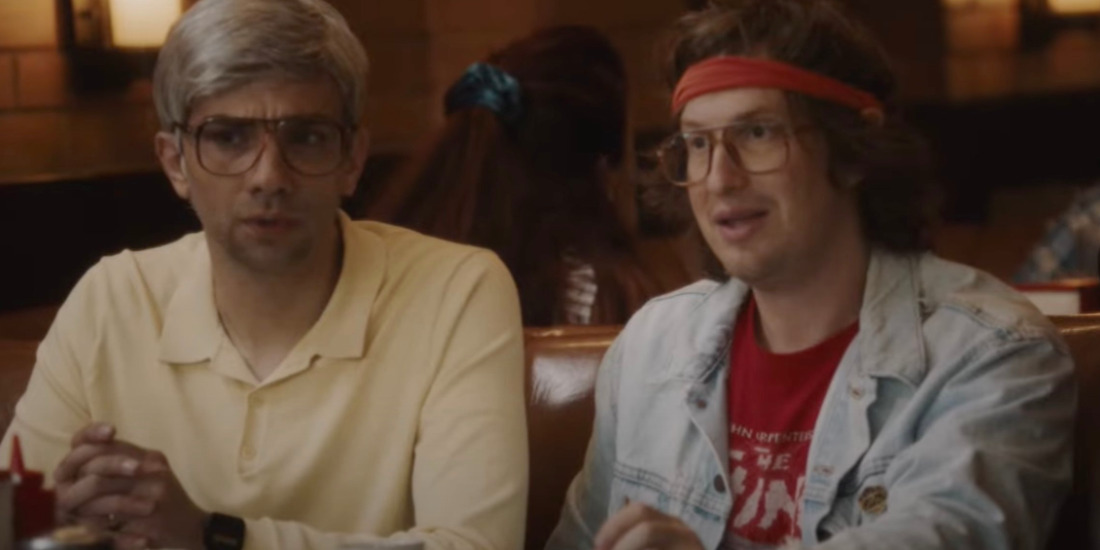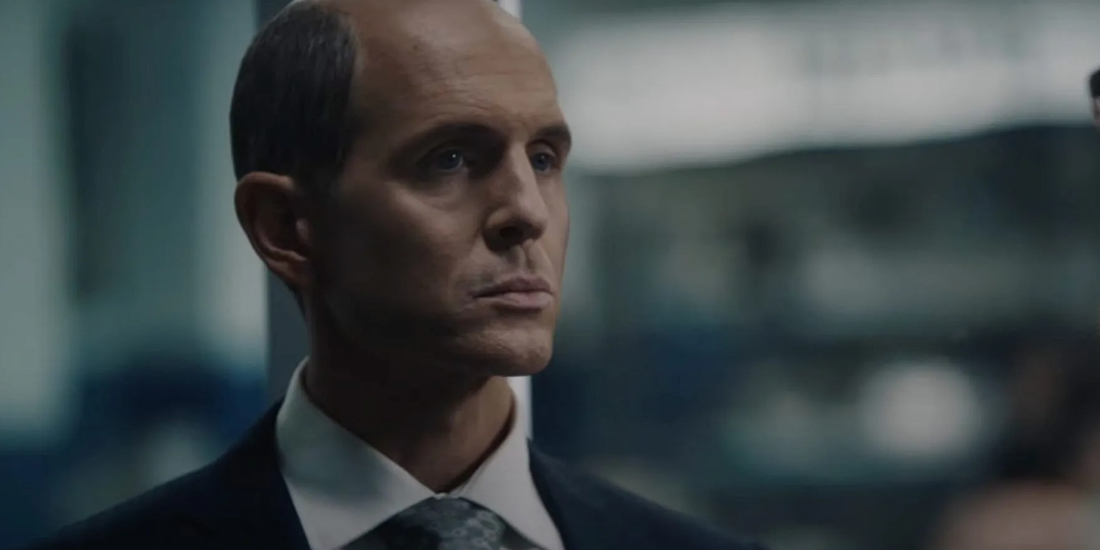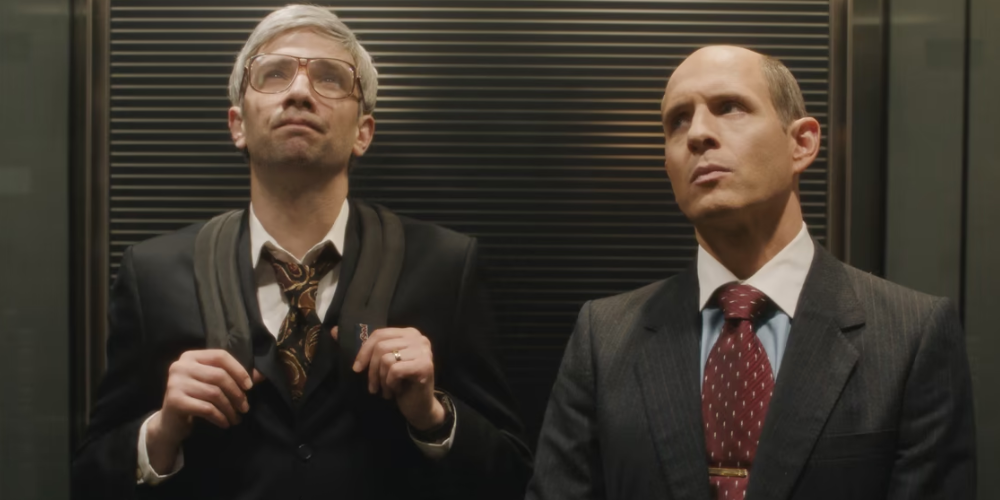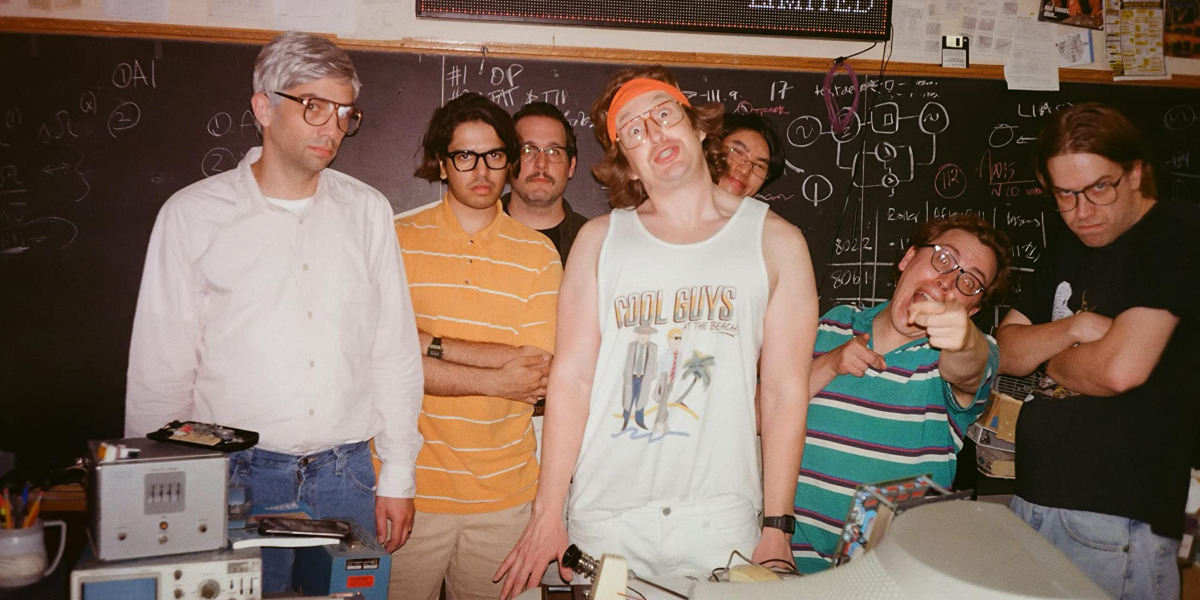Delving into the lifespan of RIM and their revolutionary BlackBerry products, ‘BlackBerry’ is a comedy–drama film directed by Matt Johnson. The film features Jay Baruchel and Glenn Howerton in central roles as the company’s Co-CEOs, alongside Saul Rubinek, Rich Sommer, and others. Following BlackBerry’s rise to influence and power, the film revolves around co-founders Mike Lazaridis and Douglas Fregin after they partner up with a business “shark,” Jim Balsillie. With Mike’s brains backed by Balsillie’s skills and experience, RIM’s BlackBerry soars to astronomic heights. However, sooner than expected, RIM encounters a setback that proves hard to bounce back from.
If you’re curious to see where this enthralling journey takes this tech industry giant, here is everything you need to know about the ending of ‘BlackBerry.’ SPOILERS AHEAD!
BlackBerry Plot Synopsis
During the late 90s, in Waterloo, Ontario, Canada, Mike Lazaridis and his friend/business partner, Douglas Fregin, arrive at Sutherland Schultz to pitch their new product, Pocket Link. Jim Balsillie, who is distracted due to his own upcoming merger meeting, declines the pair’s business and advises them to come up with a new name. However, later at the merger meeting, Jim overplays his authority and loses his job. As a result, Jim approaches Mike in his office to offer a proposal to Mike.

Jim tells Mike that he will leave his job at SS for Jim’s company, Research In Progress, a.k.a RIM, and invest in it. In exchange, Jim wants Mike to make him the company’s CEO. Doug is vehemently against the idea, and Mike turns down Jim’s offer. Nevertheless, later when RIM’s 16 million deal with US Robotics falls through, Mike realizes his company needs someone with experience in the business world. As such, Jim becomes Co-CEO of RIM alongside Mike, with 33% of the company for 125 thousand dollars.
As the first order of business, Jim tries to fix the deal with US Robotics and learns that they know about Mike’s Pocket Link product. Jim swiftly books a meeting with John Woodman from Verizon, a communication company, to pitch their all-in-one mobile device with integrated email facilities. Consequently, the engineers at RIM scramble to prepare a working prototype of Pocket Link. Although the pitch meeting picks up on a rocky start, it ends in a success.
By 2003, BlackBerry phones become the hottest new tech everywhere. The company rapidly grows, changing the lives of Mike, Jim, and their employees forever. Eventually, competitor Carl Yankowski from Palm Pilot comes knocking at RIM’s door, proposing a merger between the companies and threatening with a hostile takeover otherwise. Jim plays nice with Carl and buys himself enough time to increase his product sales. However, once the sales increase, they bypass Verizon’s limit load. Simultaneously, Jim also poaches several engineers from big companies like Paul Stannos, the head physical engineer of Google.
Soon, a global BlackBerry crisis follows due to constant user service interruption. Once Mike realizes Jim has bypassed the limit load, he tries to find a way to overcome the limit. At the suggestion of a former Naughty Boy employee, Mike solves the issue by hacking into Verizon’s towers. Once Verizon realizes it can now sell over 2 million BlackBerry devices, the BlackBerry stocks skyrocket by 400%. Due to the same, RIM avoids Palm Pilot’s hostile takeover, and by 2007, BlackBerry dominates the market.
Once at their peak, Jim’s attention diverts to entertaining his interest in hockey games and NHL. Meanwhile, the Securities and Exchange Commission tries to get hold of the head of RIM in a serious investigation. To make matters worse, Steve Jobs announces his new smartphone, iPhone, to the market. With a revolutionary design and big promises, Apple’s iPhone threatens to wipe out BlackBerry, much to Mike’s denial.
BlackBerry Ending: What Happens To BlackBerry After The iPhone Announcement?
After Apple announces the iPhone, Mike overlooks it, refusing to see it as the threat it is. Instead, he continues to work on his new product design, with a trackpad built into the phone’s keyboard. Since Mike has revolutionized the market with his original BlackBerry products, he’s unwilling to face that another industry revolutionary is trying to overtake him. Moreover, the difference in time between the invention of BlackBerry and the iPhone is also minuscule.

Therefore, Mike firmly insists that iPhone’s touchscreen feature is trivial and unappealing. He believes the users love the classic BlackBerry keyboard click and believes customers won’t be interested in a phone without a keyboard. However, when Mike unveils the new product to the Verizon board, the members are unimpressed, having seen the iPhone presentation. When Woodman expresses his disappointment and compares BlackBerry to iPhone, Mike snaps and lies about having a similar touchscreen product.
Still, Mike refuses to part with his classic BlackBerry keyboard and incorporates it into the idea. Hence, Mike pitches BlackBerry Storm, a phone with a screen on top of a keyboard, for the physical experience of the BlackBerry click. At the RIM office, Mike rushes to prepare a prototype and agrees to production in China to fast-track the process. Throughout the film, Mike is firmly against the idea of Chinese production since he believes manufacturing is never up to par.
Aware of the same, Doug tries to talk Mike out of the decision. However, Mike refuses to listen to him, leading to a rift between the two. As a result, Doug quits after realizing Mike’s refusal to face the truth will lead to the company’s downfall. Months later, RIM is ready to launch BlackBerry Storm to the market. However, when Mike examines one of the products, he realizes due to the inadequacy in manufacturing, the device has a faint buzzing noise. Eventually, all BlackBerry Storms end up having manufactural errors. Ultimately in the race between BlackBerry and the iPhone, Blackberry loses.
What Happens To Jim Balsillie?
While Mike and Doug combat the rising iPhone problem, RIM also faces an investigation from the REC. When Jim tries to solve the limit load, he poaches high-profile engineers from some of the world’s biggest companies, including Nintendo, Microsoft, and Nokia. In order to do so, Jim backdates BlackBerry stocks to offer millions in payments to several engineers, including Google’s Paul Stannos. Although he successfully avoids consequences for a while, the SEC comes looking for him in 2008.

While the SEC calls up Doug and Mike, the co-founders of RIM, to ask them questions about hiring, Jim makes rounds at the NHL offices. Jim is an avid Hockey enthusiast and wishes to buy NHL’s Pittsburgh Penguins and move them to Canada. He also buys the Copps Coliseum, intending to use it for Hockey games exclusively. Nevertheless, the NHL declines Jim’s offer to buy the Pittsburgh Penguins after they catch news of Jim’s plans to move the team from America. Due to the same, Jim snaps at the NHL board and threatens to buy their whole establishment out.
Jim’s meeting with the NHL costs him a meeting with Stan Sigman, CEO of AT&T, who is partnering with Apple for the iPhone. According to the RIM marketing team, the market interest in BlackBerry has decreased significantly compared to the iPhone. Therefore, Jim tries to convince AT&T to work with BlackBerry before the iPhone launch. In the end, his last-ditch effort to save the company fails.
Meanwhile, at the office, Mike learns about Jim’s illegal stock-backdating practices. Toward their journey’s beginning, Mike and Jim had promised never to lie to each other. However, by the end, both continue keeping pivotal secrets. Mike realizes their partnership is as well as over now. Therefore, Mike makes a deal with the SEC: in exchange for Jim’s board seat and the company’s full cooperation, the SEC agrees to leave RIM alone. In the end, Jim is charged with fraud but avoids jail time.
How Did Apple Secure a Deal With AT&T?
Right before Jim finds out about the SEC investigation, he arrives at the office to tell Mike about Apple’s secret to dealing with their service overload problem. One of the reasons Mike overlooked the iPhone was because he had resignations about its large data requirements. Mike thinks the iPhone will strain the AT&T network and cause problems.

However, when Jim calls AT&T CEO Stan Sigman, he learns something about BlackBerry’s competitor. Jim offers to sell half a million BlackBerry devices to AT&T free of cost. In return, all Jim asks is that AT&T release their product at a discount a month before the iPhone. Still, Stan declines the offer. As such, Jim realizes AT&T plans on selling data instead of minutes. By doing so, iPhone’s data-based device will bring in giant revenues for At&T and decimate any possibilities of a network problem.
Although ‘BlackBerry’ is based in real life, it fictionalizes several instances for the sake of its narrative. The film ends with Mike realizing the failure that the BlackBerry Storm promises, followed by end notes about the characters and their lives. Currently, RIM exists as BlackBerry Limited, a Canadian software company that specializes in security. BlackBerry Limited no longer produces smartphones, and none of the original CEOs or Founders are involved with the company anymore. Nevertheless, RIM’s original legacy with its revolutionary BlackBerry devices during the early 2000s is impossible to ignore.
Read More: Is BlackBerry Based on a True Story?


You must be logged in to post a comment.